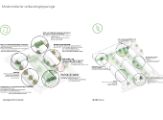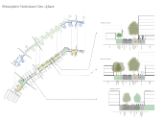The Characteristics of Nieuwland

The Characteristics of Nieuwland
Witteveen+Bos is working under assignment to the Municipality of Schiedam on the urban characteristics of Schiedam. In a close collaboration between Witteveen+Bos and the municipality of Schiedam, we defined the spatial characteristics of urban districts based on spatial analyses. One of the districts we studied is the post-war district Nieuwland.
Like many municipalities in the Rotterdam region, the city of Schiedam faces huge housing challenges. The city is under great pressure, as is the district of Nieuwland. The municipality and region want to pursue a compaction policy, also here. However, there is no clear picture about how this can be achieved without compromising the spatial qualities of the district and further fragmentation of the structure of the district.
In addition, as an early modernistic district, the district of Nieuwland underwent renewal in the 1980s and 90s. This renewal detracted from the original spatial qualities.
Prior to the analysis, the history of the development of Schiedam was mapped out. Within the analysis, reference is made to the original design principles which form the basis for the development of Schiedam and its districts.
In Nieuwland, the original modernistic principles were analysed. From these, two parcellation typologies were identified. These typologies are characterised by their openness, with intimate green areas being connected to the public space.
To prevent future developments in the district further detracting from the district, the openness of the modernism was identified as a characteristic. These characteristics were projected on the structures of the district and described in cross sections.
Witteveen+Bos produced a report of the findings, which will provide a pillar in the coming years for the spatial choices the municipality of Schiedam will make in the Nieuwland district.
More information?






